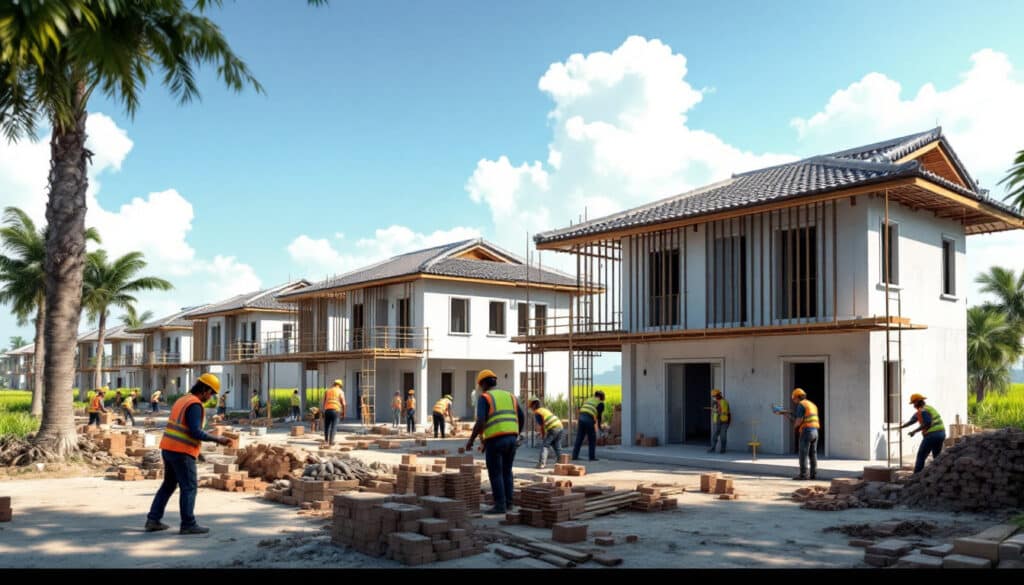
The market for smart buildings in North America is expanding, with an estimated size of $71.97 billion in 2020 and forecasts pointing to an impressive jump to $235.78 billion by 2031. With this exponential growth comes growing trends major in the residential applications, commercial and industrial. The integration of innovative technologies, such as the Internet of Things (IoT) and automation, is not only redefining how we interact with our built environments, but also how these infrastructures can contribute to a more sustainable and intelligent future. With this in mind, an in-depth analysis of the outlook and forecast for 2031 highlights the opportunities and challenges that will shape this booming market.

The market for smart buildings in North America is poised to witness a significant transformation by 2031. With increasing introduction of innovative technologies and increased awareness of the benefits of energy efficiency, this sector is expected to register notable expansion. This article examines the detailed market outlook and forecast, focusing on the different applications in which these structures will be deployed.
Table of Contents
ToggleCurrent Market Trends
The smart building landscape is evolving, driven by technological innovations and growing demand for efficiency. Systems that promote optimal energy management, such as the Internet of Things (IoT), play a key role in this transformation. As a result, the market size for smart buildings is expected to increase from approximately $71.97 billion in 2020 approximately $235.79 billion by 2031, showing an impressive compound annual growth rate (CAGR).
Analysis by Application
Residential Applications
In the residential sector, the adoption of smart buildings is driven by the search for better energy efficiency and increased comfort. Homes equipped with smart management systems allow heating, lighting and security to be controlled remotely, providing a seamless user experience. It is anticipated that this application will experience CAGR of 3 to 5% over the coming years, propelled by the rise of connected devices.
Commercial Applications
The commercial segment of the smart buildings market is also growing as companies realize the long-term cost savings associated with adopting these technologies. Building automation solutions enable efficient facility management, thereby reducing operational costs. The combination of sustainability and technological innovation is a major factor propelling this application towards increasing market dominance.
Industrial Applications
In the industrial sector, the integration of smart buildings helps optimize processes and improve productivity. These infrastructures make it possible to monitor operational conditions in real time, thus ensuring efficient operation of factories. The prediction indicates a significant expansion of this application, especially due to the focus on sustainability and optimization of resources.
Environmental and Economic Consequences
Smart buildings don’t just improve operational performance; they also contribute to environmental objectives. By integrating renewable energy sources and resource management systems, these structures make it possible to reduce carbon emissions and achieve sustainability standards. By 2031, the need to meet these environmental expectations will act as a catalyst, encouraging more investment in this sector.
In summary, the smart building market in North America is booming. With forecasts showing dynamic growth across various applications, this sector is set to transform not only the architectural landscape, but also the way we live and work. Industry players must focus on continuous innovation and adoption of emerging technologies to remain competitive in this evolving market.

- Residential Applications: Steady growth driven by increasing adoption of smart home technologies.
- Commercial Applications: Rapid expansion due to companies’ desire to optimize resources and reduce operational costs.
- Industrial Applications: Increasing adoption of automated systems to improve the efficiency and safety of operations.
- Integration of Renewable Energy: Significant growth in buildings using renewable energy sources, positively impacting the environment.
- Automation Technologies: Major influence of advanced management and monitoring systems in various types of buildings.
- Sustainability Standards: Emphasis on ecological regulations and certifications, promoting intelligent construction.
- Connectivity Infrastructure: Growing importance of 5G and IoT networks for smart building function.
- Renovation Market: Increase in renovation projects aimed at transforming conventional buildings into smart spaces.
- Strategic Partnerships: Increased collaboration between technology companies and construction players, propelling innovation.
- Education and Awareness: Growing need for consumer information on the benefits of smart buildings.
@ACOMEgroup reprend l'activité de la start-up Energie IP et s'étend au marché des bâtiments intelligents@Energie_IP#energie #manche https://t.co/DCdGywAIPV
— Evrard Isabelle (@evrard1212) February 22, 2022
















